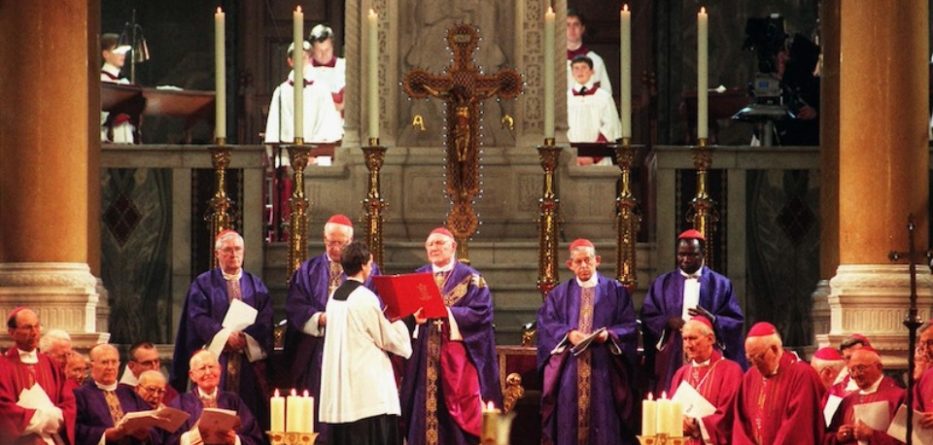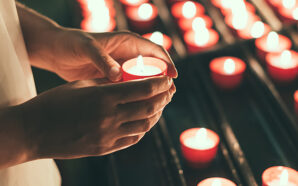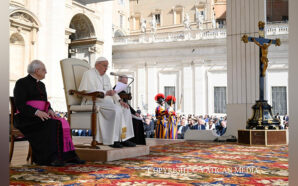Cardinal Edward Cassidy, who has died aged 96, was a Vatican official, diplomat and ecumenist whose life in the Church offered a witness to what can be done through slow, patient diplomacy, often away from the limelight.
The Australian cardinal was a “quiet achiever”, who will be remembered for making significant strides in improving relations between churches, and in Catholic-Jewish dialogue.
Renowned for his affability, kindness and humility, Cassidy served as President of the Pontifical Council for Promoting Christian Unity from 1989 to 2001. During that time he oversaw the groundbreaking 1999 agreement between Catholics and Lutherans on the doctrine of Justification, the question of how God, through Christ, removes the penalty of sin and opens the way to salvation.
The joint document effectively saw the resolution of a 500-year-old dispute which had been a theological fault line between Catholics and Protestants at the Reformation. Getting an agreement on this issue was not easy.
“When I waited for him in a meeting room, you could hear him coming with his very specific, very fast, small steps. And that was also his approach to ecumenism: you need (a lot of) small steps,” Fr Oliver Lahl, an ecumenist who worked with Cassidy’s successor Cardinal Walter Kasper, told me.
“He brought to the Lutheran-Catholic dialogue the human touch and the view of an outsider. He was not a scholar of the history of reformation or the development of Lutheran theology. His contribution was friendship and reliability. He was able to compromise and to understand, that to widen the common ground, both sides had to move.”
As president of the pontifical council, the cardinal was also responsible for the Church’s relations with Jews. When he took over, meetings of the International Catholic-Jewish Liaison Committee had been put on pause following a series of controversies, including the Vatican’s initial support for a Carmelite Convent in Auschwitz. Cassidy broke the deadlock and got the meetings going again. Vatican support for the Auschwitz convent was withdrawn. Following the cardinal’s death, the World Jewish Congress praised the cardinal for his work noting he was the first Church official to call on Catholics to “teshuvah”, the Hebrew term for repentance.
Cardinal Cassidy’s rise to become one of Australia’s highest-ranking churchmen was an unlikely one. As he explained in his memoirs, My Years in Vatican Service, his parents were not Catholic and divorced when he was one. The young Cassidy was brought up by his maternal grandparents (they were Catholic but not practising), and his grandmother had him received into the Church. Although he never went to Catholic schools, he decided in his early teens to become a priest. After leaving school at 15 he was deemed not educated enough to join the seminary so went to night classes, while holding down a job as a clerk, before starting his training for the priesthood.
Ordained in 1949 for the Diocese of Wagga Wagga, Cassidy was sent to Rome for further studies and was planning to return to Australia when he was unexpectedly summoned for an interview at the Pontifical Ecclesiastical Academy, the Accademia, where the Vatican diplomatic corps are trained. At the time he protested about starting a diplomatic career because of the shortage of priests at home but was told by Archbishop Giovanni Montini (later Pope Paul VI) that his bishop thought it was a good idea.
He was posted to work in the Holy See’s diplomatic missions across the world including in El Salvador, where he became friends with Archbishop Oscar Romero, and South Africa during the apartheid era where he negotiated the appointment of the first non-white bishops. For two years he was stationed in Taiwan (the last papal ambassador to have been based there) and was later Holy See envoy to Bangladesh, from where he made courageous pastoral visits to Myanmar, and the Netherlands.
Cassidy later returned to Rome where he was appointed sostituto at the Secretary of State, the equivalent of a papal chief of staff, and one of the most powerful positions in the Vatican. He was the first non-Italian to hold the post, but his time in office lasted only 18 months. One source told me he was considered “too kind” for a job which included overseeing the administration and personnel of the Roman Curia and the Holy See’s network of embassies.
Although Cassidy felt he had insufficient experience to take on the Christian unity role, he soon found that diplomatic skills are easily transferred to ecumenical work. He became passionate about intra-Christian dialogue, and it was for this reason that he broke ranks and questioned the authority of Dominus Iesus, the Congregation for the Doctrine of the Faith’s declaration that Protestant churches are not “churches in the proper sense.” Cassidy believed the choice of language damaged relationships.
“Half a year after the solemn celebration in Augsburg about justification, known also as a cornerstone in Lutheran-Catholic relations, there came this stumbling block,” Fr Lahl explained. “But Cassidy never lost his temper. He never gave up. He tried to keep the different parties together; the different desks in the council – the different dicasteries in the curia – the different opinions between the groups in dialogue. He was patient and he had the conviction, that the time will come to do the next step. In Germany, we say, that sometimes we have to ‘drill thick planks’. Cassidy was able to do that.”
With the election of Pope Francis, new energy for ecumenical work was unleashed. In 2016, Francis took the decision to travel to Sweden to mark 500 years since the Reformation where he said “the doctrine of justification thus expresses the essence of human existence before God”. Such a trip, and statement, wouldn’t have been possible without the painstaking work carried out by Cardinal Cassidy and the Catholic and Lutheran dialogue bodies those years earlier.
After retirement, the cardinal could have remained in Rome, living in a comfortable Vatican apartment. Instead, he decided to return to Australia, where he would step in to say Masses in parishes when priests were away and worked as a chaplain to the Italian community in Newcastle, New South Wales. Right until the end, he showed that the small steps, and gestures, can make all the difference.








